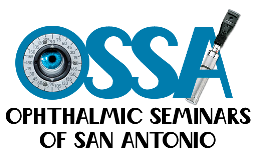Visual Acuity Testing Skills
This course is an introduction to the history of visual acuity testing and visual assessment techniques. It will describe Optotypes and the Snellen charts that are used today in ophthalmology. A description of the occulder, pinhole technique, Count Fingers, Hand Motion, and Entoptic testing will be reviewed. Acuity charts that are available for children, mental retarded, adults, etc will be shown. A step by step testing strategy will be presented for preliterate, fixation testing, children, adults and low vision. Instrumentation will also be introduced including the Potential Acuity Meter, Brightness Acuity Meter, Laser Interferometer, and Contrast Sensitivity.
Upon completion of this course, the participant should be able to:
1. Describe visual acuity charts used today in ophthalmology.
2. Demonstrate a step by step visual assessment strategy using the
techniques described from 20/20 to NLP.
3. Describe the PAM, BAT, interferometer, and contrast sensitivity testing
© 2024
